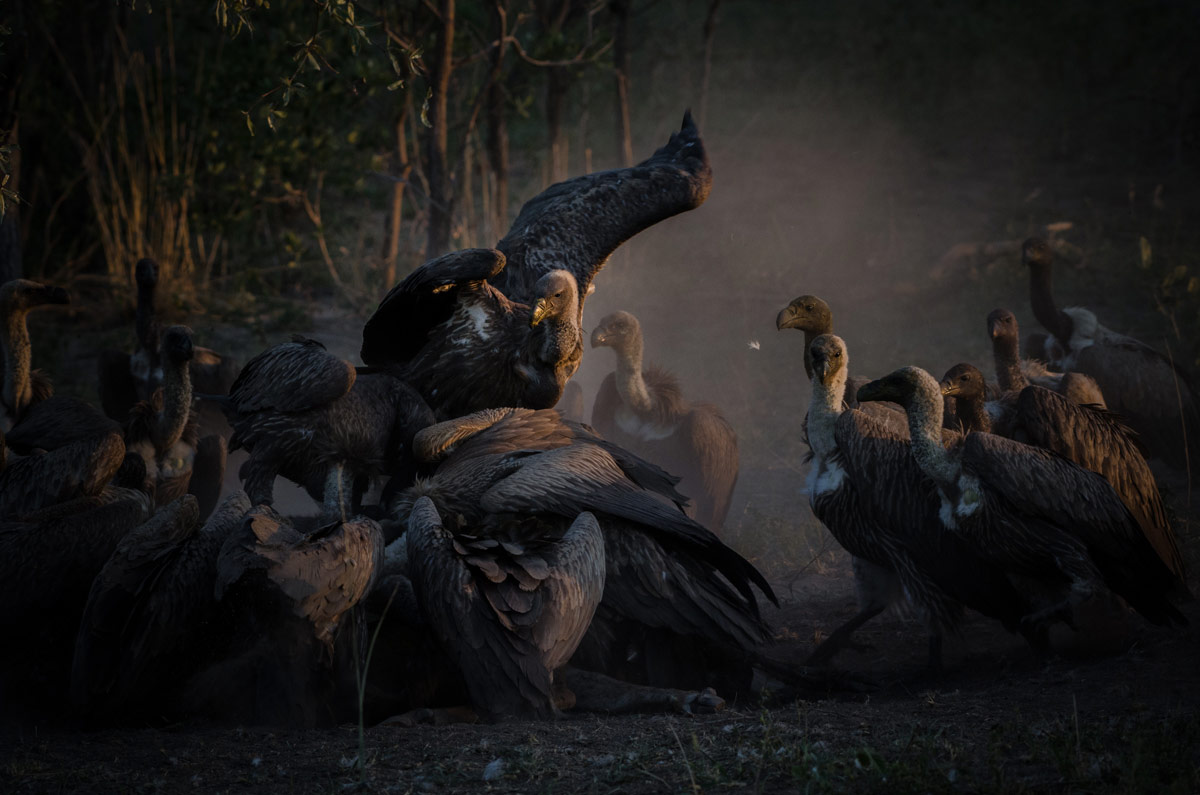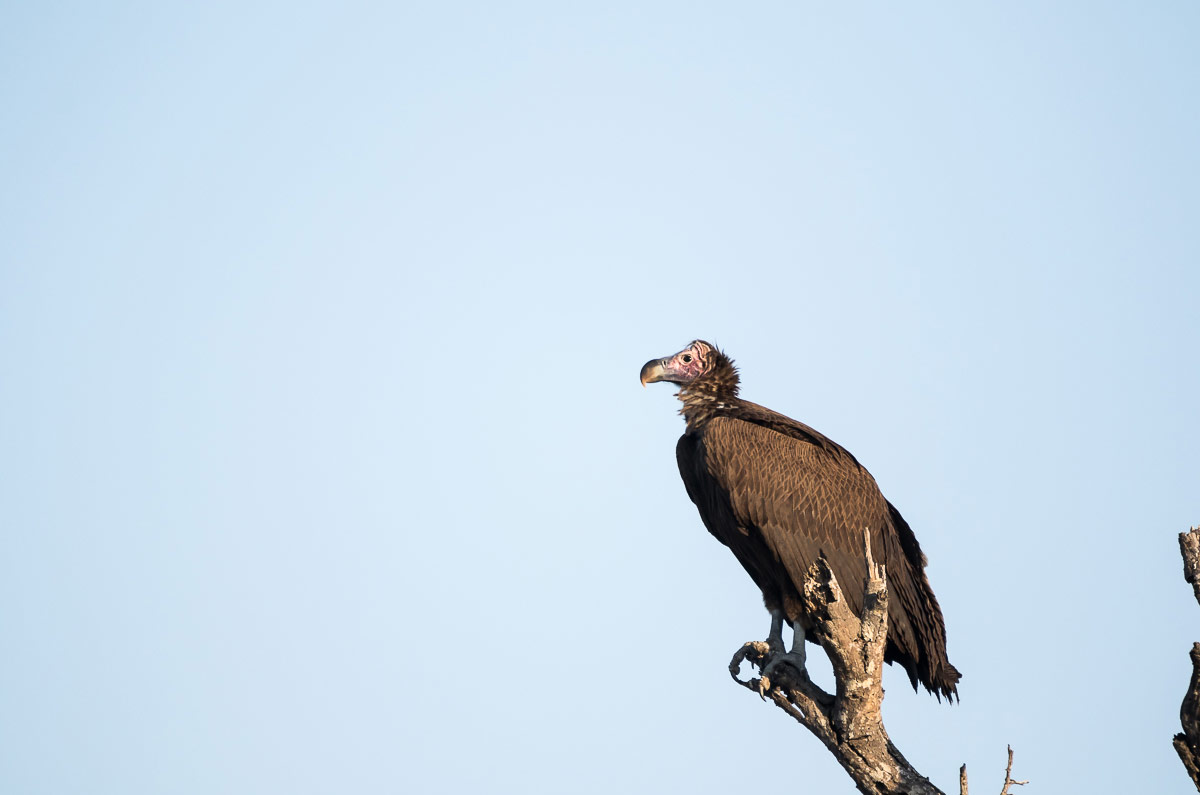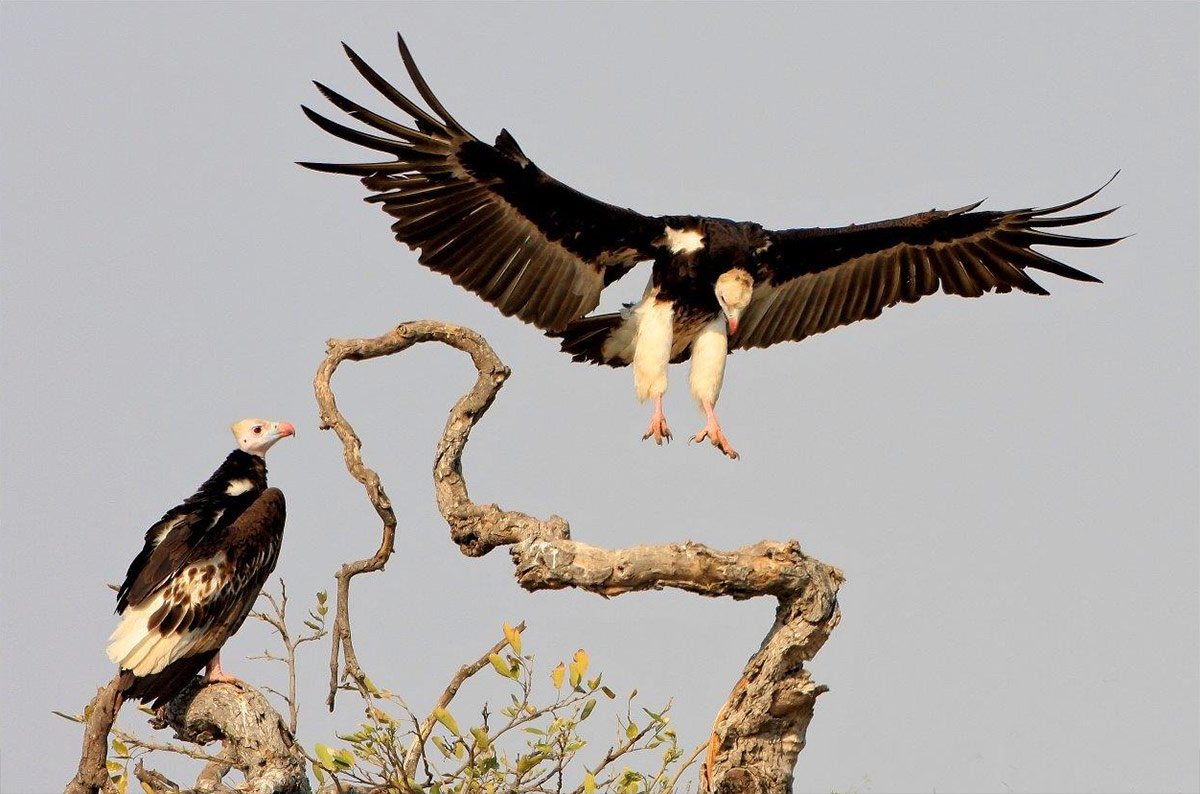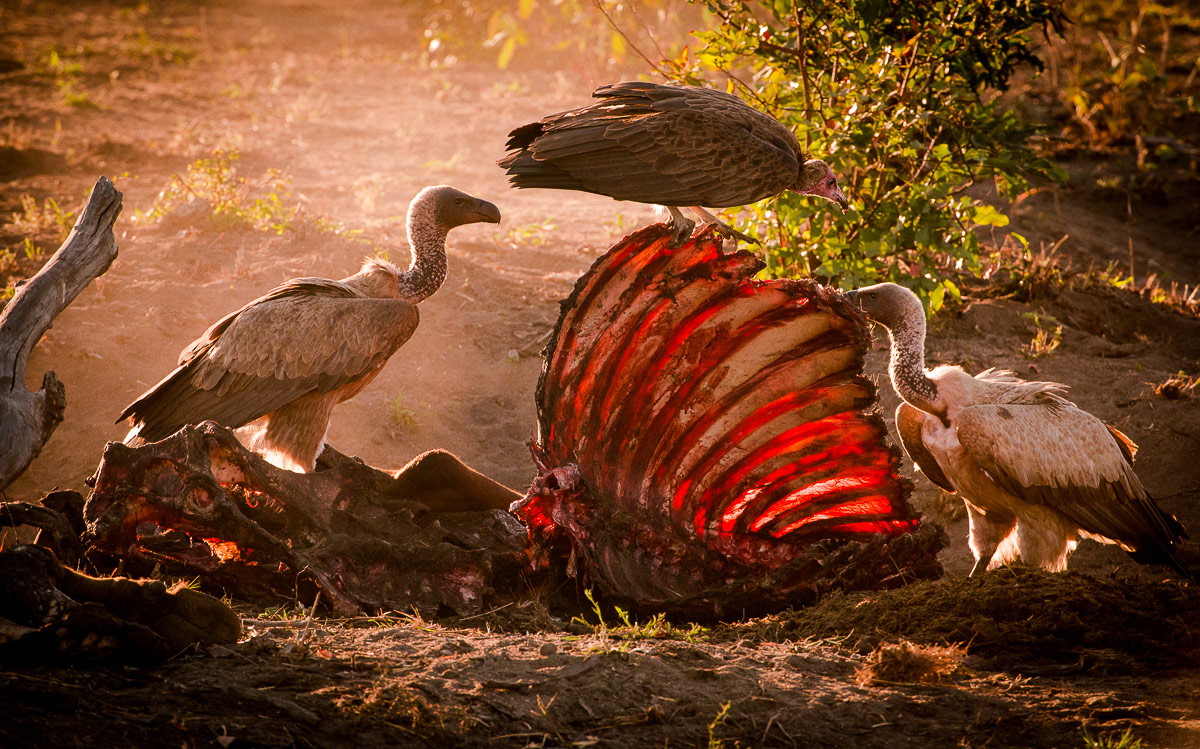Vulture Pecking Order
on Jun 21, 2017Grim and greedy scavengers, supreme opportunists, unique birds of prey, groups of gorging feathered brutes with small, featherless heads....vultures are not the most popular, and by no means the best looking, avifauna species. In fact, without them, the bushveld would be a considerably less healthy place. The bushveld of Sabi Sabi is fortunate to be home to some of the more well-known species – and with sightings of the more rare species of vulture that inhabit our area.

In the African wildlife kingdom, these creatures are greatly misunderstood. They play a valuable role in the ecosystem by disposing of dead animals and animal remains that would otherwise rot and spread disease. And while they jostle around a carcass, an interesting hierarchical feeding structure unfolds (this feeding behaviour very aptly referred to as a Wake of Vultures).
Their seemingly endless circling in the air (updrafts make it possible for them to stay high up in the sky for prolonged periods of time) allows them to spot fresh cadavers. When the opportunity presents itself – either when an animal passes away from old age or disease, or at the site of a kill if there is still food available – vultures move down towards the ground to feast.

Carcass protocol is determined by the formidability of their beaks, with the Lappet-faced Vulture first in line. Its large bill rips through and opens up the toughest hide, allowing it to devour the offal parts of a deceased animal and exposing the inside of the animal to the smaller vultures. As the largest African vulture, and among the rarest, these aggressive birds dominate the scene of a vulture frenzy and will only give way should the feared Marabou Storks arrive – huge birds fittingly referred to as the “undertaker birds.”
White-backed Vultures eagerly await the cleaving of the animal’s skin and then proceed to devour the flesh. As the most lightweight of African vultures, they are mobile and agile, but gorge on the soft tissue of the carcass until they sit, half torpid, waiting for the food to digest.

Standing at the edge of this carrion buffet are the White-headed Vultures. Shy birds that prefer to feed alone, they will wait their turn to walk off with a bit of the meat. They are able to eat any part of an animal, except the skin. Regarded as “clean feeders” they ensure there is no blood on their feathers, and therefore prefer picking away at ligaments and bones.

After all of the other vultures have feasted, the critically endangered Hooded Vultures, the smallest and least vigorous of the species, then carefully dig out the more tender portions. Their beaks enable them to remove tiny bits of flesh from bones, devouring the hard to reach areas in the carcass.
Vultures never actually hunt for their own food – they only eat carrion. They use their amazing flying skills to watch each other, and the ground, in their search of the next meal. With their incredible vision – they have linear sight of up to 100 kilometres (approximately 62 miles) - they can see the behaviour of other vultures miles away, flying in for a closer look as soon the circling of African skies becomes a race to the ground. This behaviour, of course, assists our Sabi Sabi Ranger and Tracker teams to pinpoint a possible location for predator wildlife sightings.
Their reputation as cruel, remorseless and menacing is not at all accurate as they are a vital link in our fragile ecosystem. With many vulture species becoming endangered – without their presence - the health of the bushveld and its many inhabitants is put at risk.






